(Gerry Furth-Sides) Today I am an American in Paris from afar. And I share with you a revelatory brunch and lesson by way of Susan Herrmann Loomis’ definitive new culinary lifestyle book, PLAT DU JOUR French Dinners Made Easy.
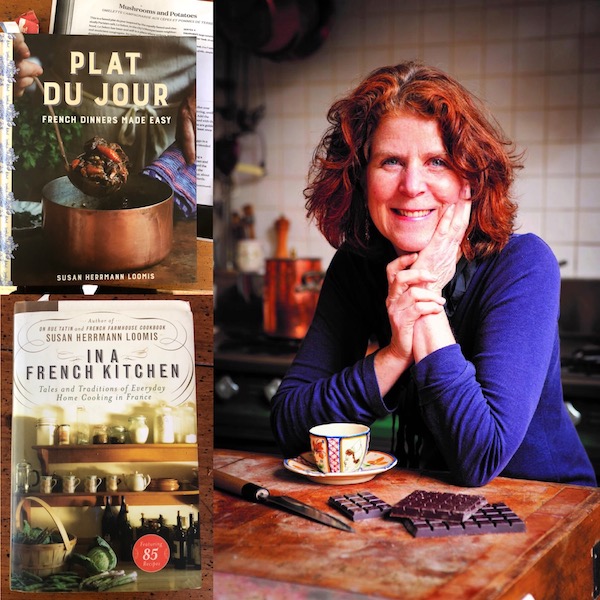
The French have always been known to love food, even everyday meals. Featured on bistro menus and dinner tables throughout France, the plat du jour, plate of the day, is the centerpiece of a two- course meal. Parisian, Susan Loomis uses this idea ingeniously in her newest book, Plat du Jour, French Dinners Made Easy. Dishes can also be a part of a bigger meal or served on their own. There are also marvelous histories
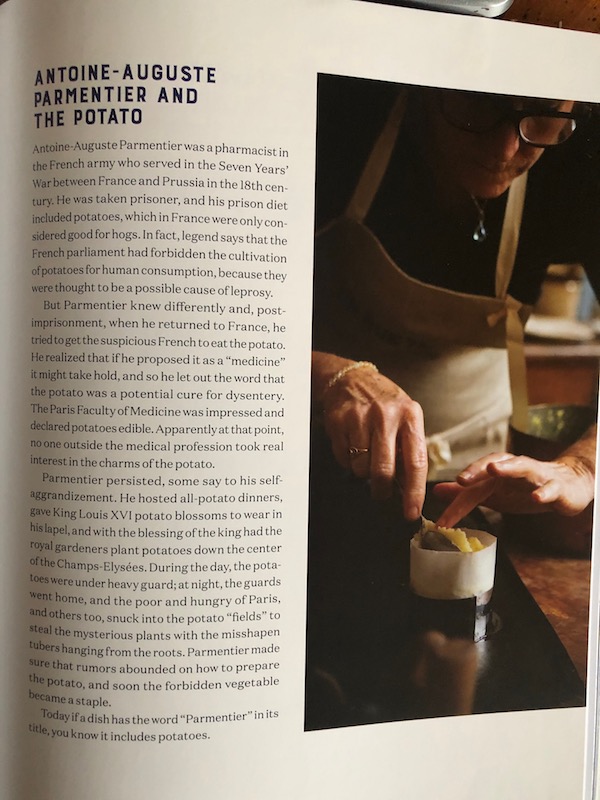
By pairing substantial main dishes such as Boeuf Bourguignon, Poule au Pot, and Bouillabaisse with just the right starter, side, and/or dessert, Plat du Jour is advertised as getting dinner on the table as easy as un, deux, trois. But even though this “one, two, three” time may feel flowing, we found it can take hours and hours of cooking before we start on the pile of pots and pans. So we used American short cuts.
The dish we tried first was Poached Eggs on Carrot Purée with Red Wine Sauce and Bacon. And it may not have been as complex as the original version by Burgundy Chef Bernard Loiseau. We used a modern egg poacher to do our eggs.
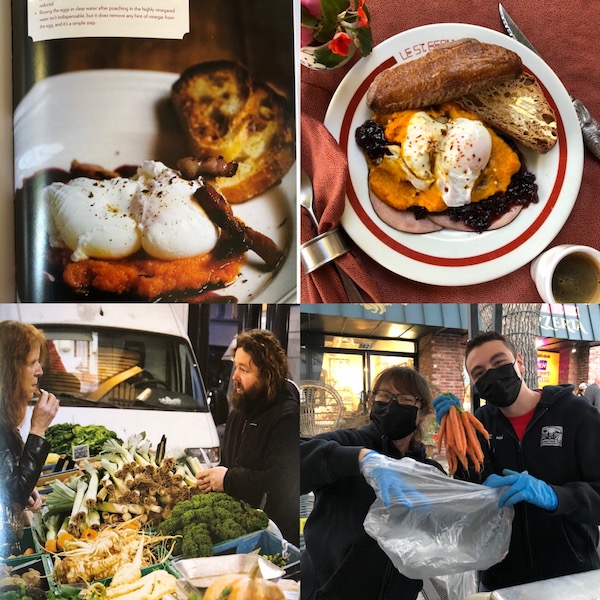

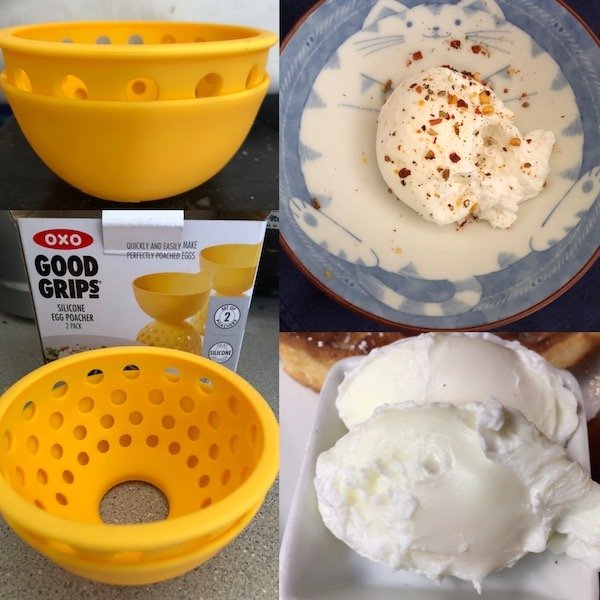
Otherwise we loved our “French” experience. It was filled with the simple yet sophisticated Parisian pleasures I longed for after reading Susan’s stories – walking at the markets, knowing your vendors and history of the dish you are preparing and taking the time to focus on each of the many steps as you cook.
Susan and this beautiful, bold book with photos of each dish are complete with her accomplished teacher ASTUCES or tips. I read all of her engrossing histories even before marking the pages for “must-make” recipes.
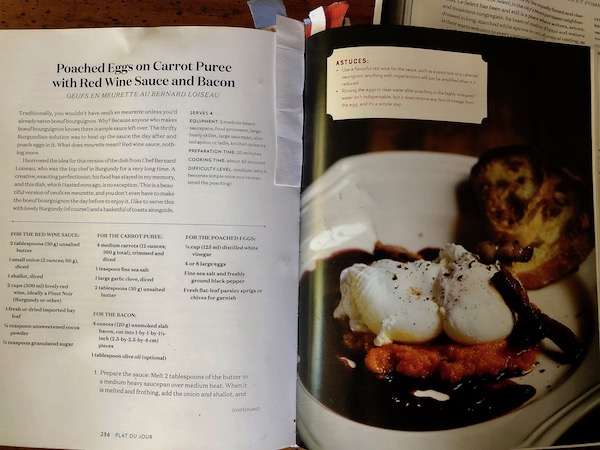
Delvigne Bakery added a French flourish to our market trip in California with an extra bouchon, our favorite chocolate thing in the world, added to our bag as a surprise

Country Omelet with Wild Mushrooms and Potatoes was another dish we tried from PLAT DU JOUR. We quickly learned that cèpes is the French name for Italian porcini Mushrooms. And it is one that has directions for making an omelette the classic, (almost runny) French way, other than a la Julia Child, where the pan is gently shaken until the omelette is done, which is always use.

When Parisian Market gardener Baptiste Bourdon convinced our cookbook author friend, Chef Susan Loomis, to cook potatoes his way, Susan fashioned Baptiste’s New Potato Fries into a recipe. I was reminded of weekly home dinners with a version of these potatoes and could not wait to try them. I already knew that horizontally sliced and baked potatoes were the best ever because my European mom (French cooking school) changed to this version – always with roasted chicken 😋 – after reading a magazine article about how unhealthy her fabulous deep-fried french fries and chicken were for us.
Batiste adds blanching them first to add a more tender potato interior to contrast with the crispy outside. Of course, called them “frites” makes them even more delicious! And so does the continuing story.
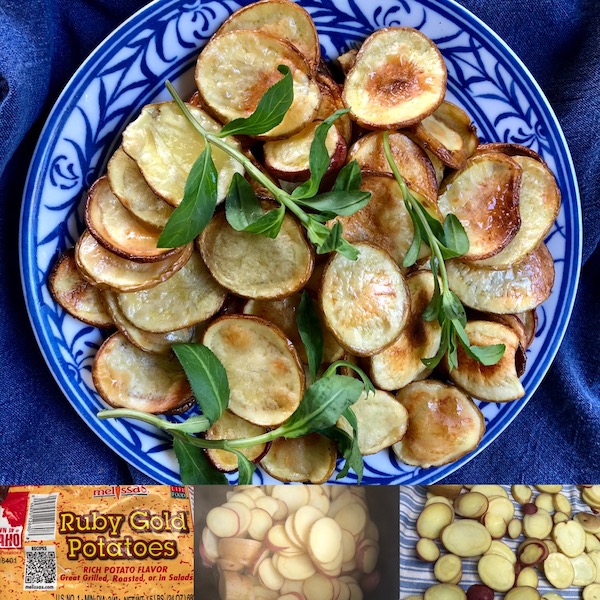
Susan is a France-based (she and her husband live in a converted convent!), award-winning author with fourteen books to her credit, a professionally trained chef, and a cooking school proprietor. Included among her titles are The THE GREAT AMERICAN SEAFOOD COOKBOOK, FARMHOUSE COOKBOOK, CLAMBAKES AND FISH FRIES, FRENCH FARMHOUSE COOKBOOK and ITALIAN FARMHOUSE COOKBOOK, (all Workman Publishing, Inc.). ON RUE TATIN (Broadway Books. 2001) a narrative about her life in France, with recipes which won the IACP best literary food book for 2002, TARTE TATIN (Harper Collins UK, 2003), the sequel, COOKING AT HOME ON RUE TATIN, (William Morrow, May 2005) and NUTS IN THE KITCHEN (William Morrow 2010), IN A FRENCH KITCHEN (Penguin, 2015). FRENCH GRILL (Countryman, 2019); PLAT DU JOUR (Countryman, 2020). All are available online. Loomis has contributed to many newspapers and magazines including the NEW YORK TIMES, LA TIMES, BOSTON GLOBE, COOKING LIGHT, CULTURE. Loomis has participated in many television and radio shows, including Good Morning America (ABC), Home Matters, Epicurious/Discovery, The Splendid Table with Lynn Rosetto Kasper@ (MPR); A Food Talk with Arthur Schwartz@ (WOR); A Good Food Hour with Evan Kleinman@ (KSRO). Loomis, who has lived in France for more than thirty years, teaches cooking and the history of French gastronomy in Normandy, Paris, and in the U.S.















 Gerry Furth-Sides
Gerry Furth-Sides  Barbara Hansen
Barbara Hansen  Chef-owner Alain Cohen
Chef-owner Alain Cohen  Roberta Deen
Roberta Deen  Jose Martinez
Jose Martinez  Nivedita Basu
Nivedita Basu